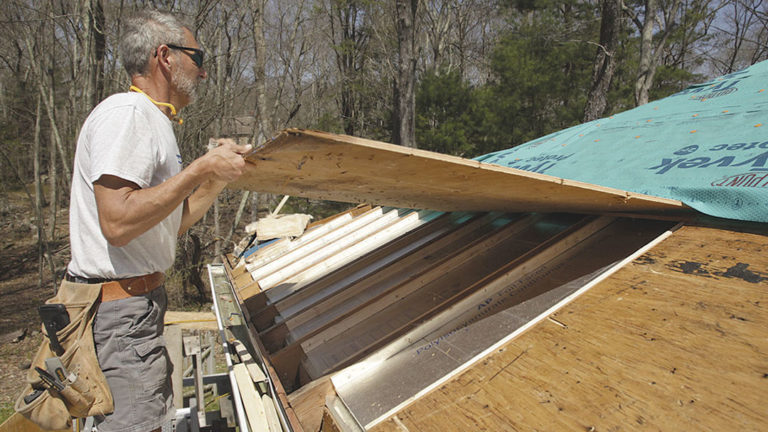
Tips for Ensuring Proper Roof Ventilation and Avoiding Issues as Your Roof Gets Older
The roof is a crucial component of your home, providing protection from the elements and preserving the overall structure of your home. As your roof ages, it is essential to maintain proper ventilation to prevent a range of problems, including moisture buildup, mold growth, and deterioration of roofing materials. In this blog, we will discuss tips for ensuring proper roof ventilation and avoiding issues as your roof gets older. From installing the right ventilation system to regularly inspecting and maintaining your roof, we will cover the key strategies you need to keep your roof healthy and functioning optimally. So, whether you’re a homeowner or a professional roofer, read on to learn more about preserving your roof’s health and longevity.
1. Choose the Appropriate Ventilation System
A key factor in preserving proper roof ventilation is installing the appropriate ventilation system. There are several options available, such as ridge vents, gable vents, and soffit vents, each with its own unique features and benefits. To ensure that you have the best system for your home, it’s advisable to seek the guidance of a roofing professional. A roofing expert can evaluate your roof and help you determine the most suitable ventilation system based on your specific needs and roof design. By installing the right ventilation system, you can prevent moisture buildup, avoid roof-related problems, and extend the lifespan of your roofing materials.
2. Conduct Regular Obstruction Checks
To maintain proper roof ventilation, it’s important to regularly check for obstructions that may be hindering the flow of air. This can include debris, insulation, or any other materials that may be blocking the vents. By performing regular inspections, you can identify any blockages and take prompt action to remove them. This will help to maintain proper airflow, prevent potential problems, and ensure that your roof ventilation system is functioning at its best. Clearing obstructions is an important aspect of roof maintenance and should not be overlooked. Neglecting to address obstructions can lead to poor ventilation and result in moisture-related problems that can be costly to repair. Regular inspections and timely removal of obstructions will go a long way in preserving the health of your roof and home.
3. Ensure Proper Vent Placement
Optimal roof ventilation requires the correct placement of vents. The placement of vents can vary based on the type of roof and ventilation system in place. For example, vents can be placed along the ridge line, on gable ends, or in the soffit area. It’s important to ensure that vents are located in the appropriate places to allow for proper airflow and ventilation. A roofing professional can advise on the correct placement of vents based on your roof’s design and ventilation system. Proper vent placement is essential to maintain the health of your roof and prevent moisture-related problems from occurring.
4. Conduct Regular Inspections
To ensure the proper functioning of your roof ventilation system, it’s important to perform regular inspections. This involves checking for any signs of damage, such as holes, cracks, or missing pieces. If any issues are discovered, it’s important to have them repaired promptly to prevent further damage and to maintain optimal roof ventilation. Regular inspections help to catch potential problems early and ensure that your roof ventilation system is working as it should. By conducting regular inspections, you can take proactive steps to preserve the health of your roof and prevent moisture-related issues from occurring.
5. Consider Adding Extra Vents
If you determine that your current roof ventilation system is not providing adequate airflow, you may need to consider adding additional vents. A roofing professional can assess your situation and recommend the best type and placement of extra vents to improve your roof’s ventilation. This can help to regulate temperature and moisture levels in your attic and prevent problems such as mold growth, rot, and deterioration of roofing materials. Adding extra vents can be a simple solution to improve the overall health and longevity of your roof.
6. Keep Insulation in Good Condition
Proper insulation is essential in regulating temperature and moisture levels within your roof. Regularly check your insulation to make sure that it’s in good condition and not compacted, which can decrease its effectiveness. Adequate insulation can help prevent problems such as mold growth, rot, and damage to roofing materials. By maintaining proper insulation, you can take a proactive step towards preserving the well-being of your roof and avoiding potential issues.
7. Regularly Clean Gutters
Cleaning your gutters on a regular basis is an important aspect of maintaining optimal roof ventilation. Clogged gutters can cause water to accumulate on your roof, leading to moisture buildup and potential problems. Regular cleaning of gutters helps to prevent these issues and ensures that water flows freely away from your roof, reducing the risk of moisture-related problems. By keeping your gutters clean, you can take a proactive step towards preserving the health of your roof and its ventilation system.
8. Be Vigilant About the Weather
Monitoring weather conditions is an important aspect of maintaining optimal roof ventilation. Extreme temperatures, especially high winds, and heavy snow can have a significant impact on your roof and its ventilation system. High winds can cause roofing materials and vents to be blown off, while heavy snow can lead to moisture buildup and added weight on your roof. By being vigilant about weather conditions, you can take steps to protect your roof and prevent potential problems. This can help to ensure the longevity and well-being of your roof and its ventilation system.
9. Regular Roof Inspection is Essential
Scheduling regular roof inspections with a professional roofing contractor is a crucial step in maintaining optimal roof ventilation. These inspections can help you detect potential problems before they escalate into significant issues. During the inspection, the contractor will be able to assess the condition of your roof and its ventilation system, looking for signs of damage, wear, and tear, or other problems. By scheduling regular roof inspections, you can take a proactive approach to preserve the well-being of your roof and its ventilation system, ensuring that it continues to perform optimally for years to come.
10. Opt for Energy-Efficient Vents
To further enhance the performance of your roof ventilation system, consider installing an energy-efficient ventilation system. These systems are designed to regulate temperature and moisture levels while reducing energy costs. By opting for energy-efficient vents, you can improve the overall health of your roof while also reducing your energy bills, making it a smart investment for the long-term well-being of your home.
Conclusion
Maintaining optimal roof ventilation is crucial for protecting your home and extending the lifespan of your roof. By following the tips outlined in this article, you can help prevent problems and keep your roof in good condition for many years to come. Regular inspections and proper maintenance can help you identify potential problems and take action to prevent them. Don’t wait until it’s too late, take action today to ensure your roof ventilation system is functioning properly and protecting your home. If you require additional information or support for your roofing needs, don’t hesitate to contact Big State Roof Solutions at 832-261-9816. Our team will be more than happy to assist you in any way we can.

